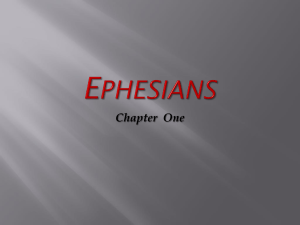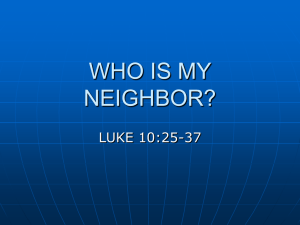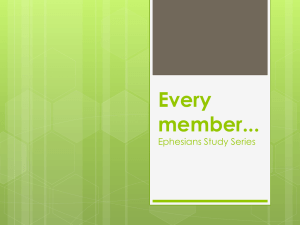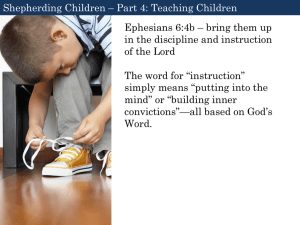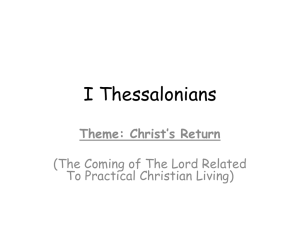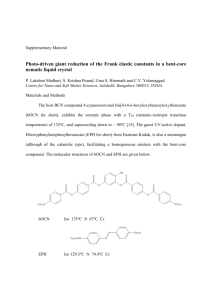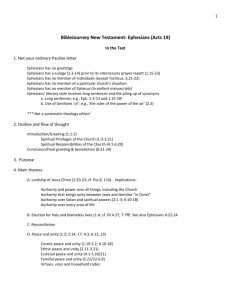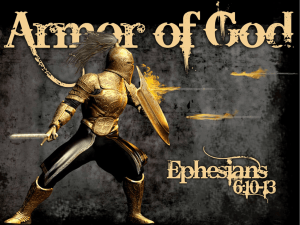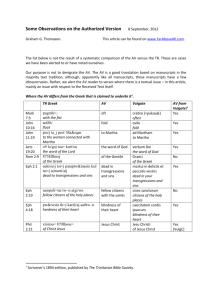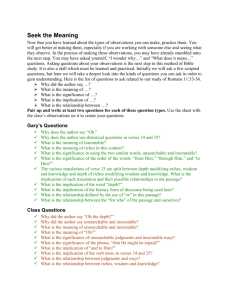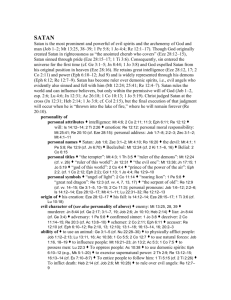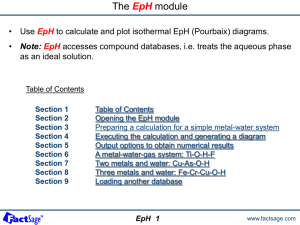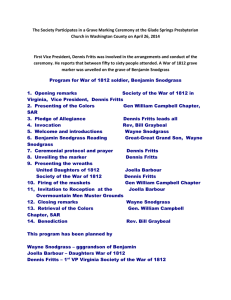Worksheet #5 – Interpretation Name: Grade _____/ 10 points
advertisement
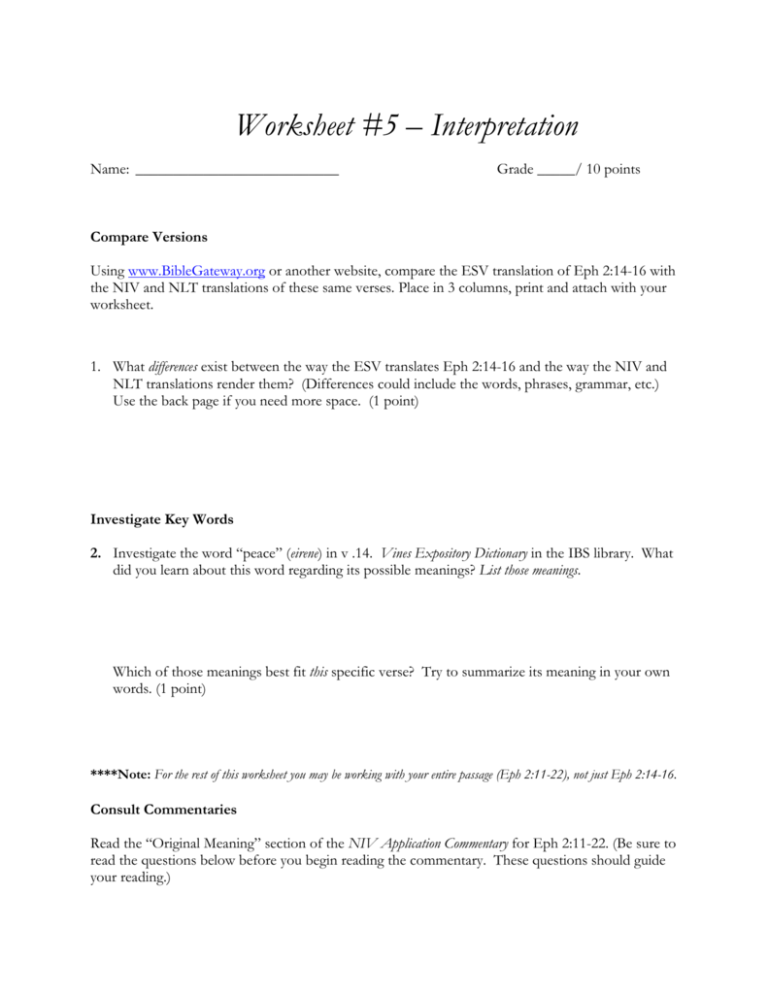
Worksheet #5 – Interpretation Name: ___________________________ Grade _____/ 10 points Compare Versions Using www.BibleGateway.org or another website, compare the ESV translation of Eph 2:14-16 with the NIV and NLT translations of these same verses. Place in 3 columns, print and attach with your worksheet. 1. What differences exist between the way the ESV translates Eph 2:14-16 and the way the NIV and NLT translations render them? (Differences could include the words, phrases, grammar, etc.) Use the back page if you need more space. (1 point) Investigate Key Words 2. Investigate the word “peace” (eirene) in v .14. Vines Expository Dictionary in the IBS library. What did you learn about this word regarding its possible meanings? List those meanings. Which of those meanings best fit this specific verse? Try to summarize its meaning in your own words. (1 point) ****Note: For the rest of this worksheet you may be working with your entire passage (Eph 2:11-22), not just Eph 2:14-16. Consult Commentaries Read the “Original Meaning” section of the NIV Application Commentary for Eph 2:11-22. (Be sure to read the questions below before you begin reading the commentary. These questions should guide your reading.) 3. What does Snodgrass say about the structure of Eph 2:11-22? Into what smaller units does he divide Eph. 2:11-22? (1 point) 4. What does Snodgrass say about the word “peace”? (1 point) 5. One of the reasons why we consult commentaries is to see how others interpret Scripture and how their own background and experience might make them more sensitive to details or intent of the original author. Consult Snodgrass and the Yusufu Turaki in The African Bible Commentary on Ephesians 2:11-22. What are two or three of the most helpful insights Snodgrass and Turaki offer regarding the meaning of Eph 2:11-22? (1 point) Compare with Other Biblical Passages 6. Compare Ephesians 2:14-22 with Colossians 1:15-22. (1 point) What similarities exist between the content of Ephesians 2:14-22 and Colossians 1:15-22? What differences exist between the content of Ephesians 2:14-22 and Colossians 1:15-22? 7. From all your work so far in Eph 2:11-22, list three significant interpretive points that help participants discover the meaning of the passage. You can use insights from what you have learned on this worksheet or so far in the process of studying Ephesians. You could ask yourself, “What have I learned that has changed the way I see the passage?” or “What interpretive points are significant for understanding Eph 2:11-22?” It might be the meaning of a word or some aspect of the culture that sheds light on the passage’s meaning. a. Significant interpretive point 1: b. Significant interpretive point 2: c. Significant interpretive point 3: 8. Compose three questions you could use in a Bible study to help participants discover the meaning of key points your passage. These questions should correspond to and be answered by #7’s interpretive points above. (3 points; 1 point for each question) Example: Who are the “dogs” to whom Paul refers in Phil. 3:2? [The “dogs” appear to be “Judaizers” (similar to the problem in Galatians) who were attempting to put believers back under the law.] Question 1: Question 2: Question 3:
